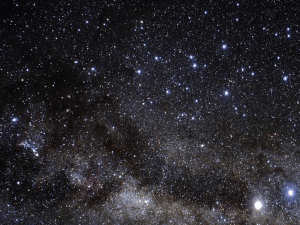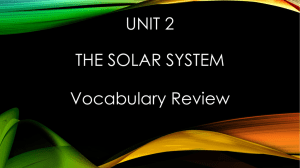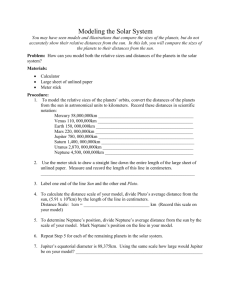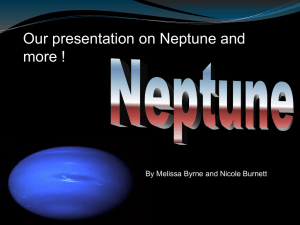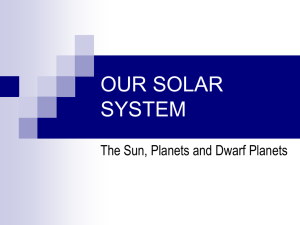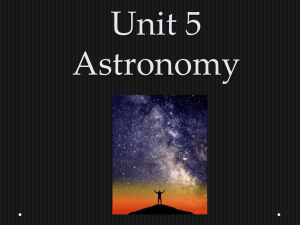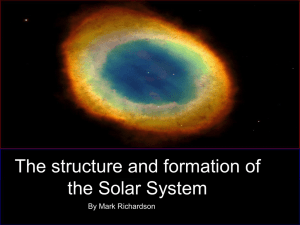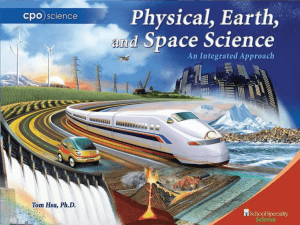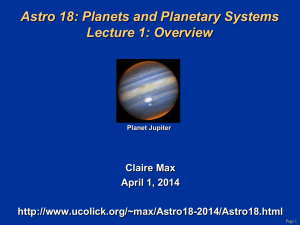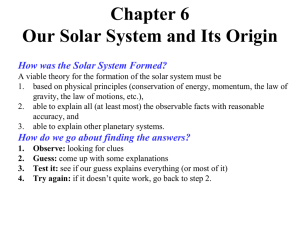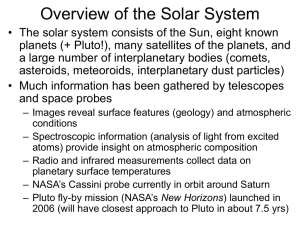outer planets
advertisement
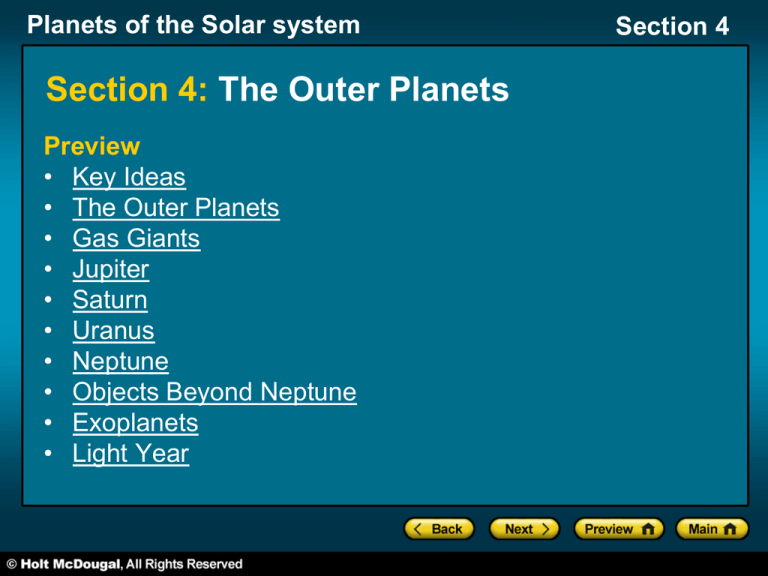
Planets of the Solar system Section 4: The Outer Planets Preview • Key Ideas • The Outer Planets • Gas Giants • Jupiter • Saturn • Uranus • Neptune • Objects Beyond Neptune • Exoplanets • Light Year Section 4 Planets of the Solar system Section 4 The Outer Planets • The four planets farthest from the sun, Jupiter, Saturn, Uranus, and Neptune, are called the outer planets and are separated from the inner planets by a ring of debris called the asteroid belt. • gas giant a planet that has a deep massive atmosphere, such as Jupiter, Saturn, Uranus, and Neptune. • Usually found past the orbit of Neptune is Pluto. At one time, Pluto was considered the most distant planet. But in 2006, Pluto was reclassified as a dwarf planet. Planets of the Solar system Section 4 Gas Giants • Gas giants are larger and more massive than terrestrial planets, but much less dense. • Unlike terrestrial planets, gas giants did not lose their original gases during formation. • Each gas giant has a thick atmosphere made mostly of hydrogen and helium gases. • Each planet probably has a core made of rock and metals. • All four gas giants have ring systems that are made of dust and icy debris that orbit the planets. Planets of the Solar system Section 4 Objects Beyond Neptune • Pluto, now defined as a dwarf planet, orbits the sun in an unusually elongated and tilted ellipse. • It spends most of its orbital period beyond Neptune’s orbit, but is sometimes closer to the sun than Neptune. • Scientists think Pluto is made up of frozen methane, rock, and ice, with an average temperature of –235 °C. Pluto has extensive methane icecaps and a very thin nitrogen atmosphere. • Pluto has three moons, one of which, named Charon, has a diameter of more than half that of Pluto. Planets of the Solar system Section 4 Objects Beyond Neptune, continued • In recent years, scientists have discovered hundreds of objects in our solar system beyond Neptune’s orbit. These objects are called trans-Neptunian objects (TNOs) and exist in the Kuiper Belt. • Kuiper Belt a region of the solar system that is just beyond the orbit of Neptune and that contains dwarf planets and other small bodies made mostly of ice • Eris, Makemake, and Haumea are trans-neptunian dwarf planets or plutoids, so called because they resemble Pluto. Other large TNOs have not been classified as such, but may eventually be considered as meeting the definition. Planets of the Solar system Section 4 Exoplanets • Exoplanets are planetlike bodies that orbit stars other than Earth’s sun. • Exoplanets cannot yet be directly observed with telescopes or satellites. Most exoplanets can be detected only because their gravity tugs on stars that they orbit. • Most of the exoplanets that have been identified are larger than Uranus, but a few have been discovered that are closer to Earth in mass. Planets of the Solar system Light Year Click below to watch the Visual Concept. Section 4

